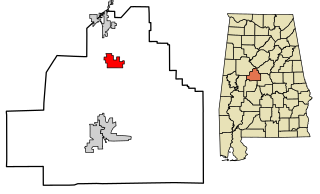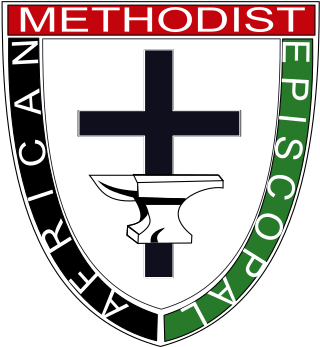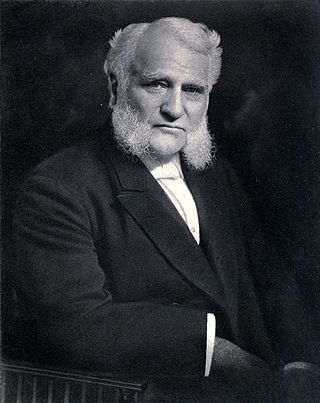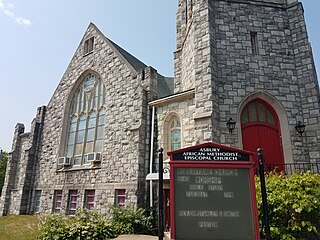Related Research Articles

Bibb County is a county in the central portion of the U.S. state of Alabama. The county is included in the ARC's definition of Appalachia. As of the 24th decennial 2020 census, its population was 22,293. The county seat is Centreville. The county is named in honor of William W. Bibb (1781–1820), the Governor of Alabama Territory (1817–1819) and the first Governor of Alabama. He is also the namesake for Bibb County, Georgia, where he began his political career. It is a "prohibition" or dry county; however, a few towns have become "wet" by allowing the sale of alcoholic beverages: Woodstock, West Blocton, Centreville, and Brent. The Bibb County Courthouse is located in the county seat of Centreville.

Centreville is a city in Bibb County, Alabama, United States. At the 2020 census, the population was 2,800. The city is the county seat of Bibb County.

West Blocton is a town in Bibb County, Alabama, United States. The population was 1,217 at the 2020 census.

The African Methodist Episcopal Church, usually called the AME Church or AME, is a Methodist denomination based in the United States. It adheres to Wesleyan–Arminian theology and has a connexional polity. It cooperates with other Methodist bodies through the World Methodist Council and Wesleyan Holiness Connection.

Emily Howland was a philanthropist, humanitarian, and educator. She supported the education of African-Americans. She was also a strong supporter of women's rights and the temperance movement. Howland personally financed the education of many black students and contributed to institutions such as the Tuskegee Institute, Henry Damon Davidson's Centerville Industrial Institute, and Kowaliga Institute in Kowaliga, Alabama where Howland Hall was named for her.

The Christian Methodist Episcopal Church (C.M.E.C.) is a Methodist denomination that is based in the United States. It adheres to Wesleyan-Arminian theology. Though historically a part of the black church, the Christian Methodist Episcopal church membership has evolved to include all racial backgrounds.

The African Methodist Episcopal Zion Church, or the AME Zion Church (AMEZ) is a historically African-American Christian denomination based in the United States. It was officially formed in 1821 in New York City, but operated for a number of years before then. The African Methodist Episcopal Zion Church adheres to Wesleyan-Arminian theology.

Joseph Crane Hartzell was an American Missionary Bishop of the Methodist Episcopal Church who served in the United States and in Africa. Hartzell missionary work included presiding over four Annual Sessions of the Liberia Annual Conference, organized the Congo Mission Conference and presided over the first sessions of the East Central Africa and West Central Africa Mission Conferences for which he was made a Knight Commander of the Order for the Redemption of Africa.
Wallace Augustus Rayfield (1874–1941), was an American architect and educator. He was the second formally educated practicing African American architect in the United States.

Daniel Alexander Payne was an American bishop, educator, college administrator and author. A major shaper of the African Methodist Episcopal Church (AME), Payne stressed education and preparation of ministers and introduced more order in the church, becoming its sixth bishop and serving for more than four decades (1852–1893) as well as becoming one of the founders of Wilberforce University in Ohio in 1856. In 1863, the AME Church bought the college and chose Payne to lead it; he became the first African-American president of a college in the United States and served in that position until 1877.

Daniel Payne College, also known as the Payne Institute, Payne University and Greater Payne University, was a historically black college in Birmingham, Alabama from 1889 to 1979. It was associated with the African Methodist Episcopal Church. The college was named in honor of Daniel Payne, the sixth bishop of the AME Church and the first black president of a college in the United States.
Henry Davidson may refer to:

The Centreville Historic District is a historic district in Centreville, Alabama, United States. It includes 7.5 acres (3.0 ha) and twenty buildings, including the Bibb County Courthouse. It is roughly bounded by Walnut Street, and the East and West Court squares. It features examples of Victorian architecture. The district was added to the National Register of Historic Places on October 19, 1978.

The Bethel A.M.E. Church, known in its early years as Indianapolis Station or the Vermont Street Church, is a historic African Methodist Episcopal Church in Indianapolis, Indiana. Organized in 1836, it is the city's oldest African-American congregation. The three-story church on West Vermont Street dates to 1869 and was added to the National Register in 1991. The surrounding neighborhood, once the heart of downtown Indianapolis's African American community, significantly changed with post-World War II urban development that included new hotels, apartments, office space, museums, and the Indiana University–Purdue University at Indianapolis campus. In 2016 the congregation sold their deteriorating church, which was repurposed into part of a new hotel. The congregation built a new worship center at 6417 Zionsville Road in Pike Township in northwest Indianapolis.

The Theological Building at A.M.E. Zion Theological Institute was a historic African Methodist Episcopal Zion Church school building on East Conecuh Street in Greenville, Alabama, United States. This later became part of Lomax-Hannon Junior College. The building was built in 1911 and added to the National Register of Historic Places in 1986. The Theological Building was demolished in 2014.

Charles Spencer Smith was a Canadian-American bishop of the African Methodist Episcopal Church and politician, serving in the Alabama Legislature. He wrote numerous pamphlets during his lifetime, as well as a history of the African Methodist Episcopal Church, and Glimpses of Africa (1895) chronicling his 1894 trip to Africa.

Asbury AME Church is an African Methodist Episcopal Church founded in 1845 in Chester, Delaware County, Pennsylvania, United States. It is the second African Methodist Episcopal church founded in Chester behind the Union African Methodist Church in 1832. Asbury AME Church is located at 1712 Providence Avenue and is an active worship center.

John Wesley Alstork was an American religious leader and African-American community organizer. He was a preacher and bishop in the African Methodist Episcopal Zion Church and is considered one of the most successful bishops of his church, in part due to his skills at organizing national conferences. He also was a trustee at several schools for African-Americans, and a businessman. He lived in Montgomery, Alabama.
Henry Damon Davidson, sometimes noted as Henry Damon, was a school administrator and church leader in Centreville, Alabama. He founded Bibb County Training School, known first as Centerville Industrial Institute in 1900. He was sometimes referred to as Bibb County's "black educator".
References
- 1 2 3 Hobson, Mike (2022-05-21). "Alvin Rice Honored by H.D. Davidson School Alumni Association". The Bibb Voice. Retrieved 2024-03-08.
- 1 2 3 "Davidson High School" (PDF). Alabama Historical Commission.
- 1 2 3 4 5 "Centerville Industrial Institute". North Carolina Digital Collections. 1910. Archived from the original on 2024-03-07. Retrieved 2024-03-07.
- 1 2 "Alabama Authors » Blog Archive » DAVIDSON, HENRY DAMON, 1869-1955" . Retrieved 2022-05-26.
- 1 2 3 "School History / School History". Bibb County School District. Retrieved 2024-03-08.
- ↑ Hartshorn, William Newton (1910). Era of progress and promise, 1863-1910 : the religious, moral, and educational development of the American Negro since his emancipation. p. 358.
- ↑ "Centerville, Ala Honors Educator". New Pittsburgh Courier. 1945-01-20. p. 14. Retrieved 2024-03-08– via newspapers.com.
- ↑ Wright, Richard Robert (1916). Centennial Encyclopaedia of the African Methodist Episcopal Church: Containing Principally the Biographies of the Men and Women, Both Ministers and Laymen, Whose Labors ... Helped Make the A.M.E. Church what it is : Also Short Historical Sketches ... Book Concern of the A.M.E. Church. p. 79.
- ↑ "Virgo". search.lib.virginia.edu.